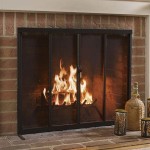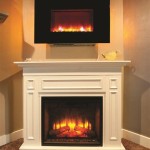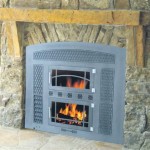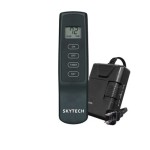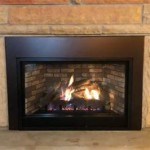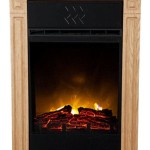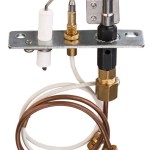```html
Modern Outdoor Fireplaces: Enhancing Outdoor Living Spaces
Modern outdoor fireplaces represent a significant departure from traditional fire pits and chimineas, offering sophisticated design, enhanced functionality, and increased safety features. These installations are designed to seamlessly integrate with contemporary outdoor living spaces, providing warmth, ambiance, and a focal point for social gatherings. The evolution of outdoor fireplaces reflects a growing desire for year-round outdoor enjoyment and a seamless transition between indoor and outdoor living.
The market for modern outdoor fireplaces encompasses a wide range of styles, materials, and fuel options, allowing homeowners to select a unit that complements their existing landscape design and meets their specific needs. From sleek, minimalist designs to more elaborate, custom-built structures, the possibilities are virtually limitless. The integration of advanced technology and innovative construction techniques has further expanded the options available, resulting in fireplaces that are not only aesthetically pleasing but also highly efficient and environmentally conscious.
Key Point 1: Design and Material Considerations
The design of a modern outdoor fireplace is paramount to its overall appeal and its ability to harmonize with the surrounding environment. Architects and designers often prioritize clean lines, geometric shapes, and the use of natural materials to create a contemporary aesthetic. The selection of materials plays a crucial role in achieving the desired look and ensuring the fireplace's durability and longevity.
Common materials used in the construction of modern outdoor fireplaces include:
- Concrete: Concrete offers versatility in terms of shape and texture. It can be poured in place to create custom designs or pre-cast into modular components for easier installation. Concrete fireplaces often feature a smooth, polished finish or a textured, exposed aggregate surface. Its durability and resistance to weathering make it a suitable choice for outdoor applications.
- Stone: Natural stone, such as granite, limestone, and slate, provides a timeless and elegant aesthetic. Stone fireplaces can be constructed using dry-stacking techniques or with mortar for added stability. The natural variations in color and texture create a unique and visually appealing focal point. Sourcing locally available stone can also reduce the fireplace's environmental footprint.
- Metal: Metal, such as stainless steel and corten steel, is often used for modern outdoor fireplaces due to its sleek appearance and durability. Stainless steel is resistant to corrosion and can be polished to a high shine or brushed for a more subdued look. Corten steel, also known as weathering steel, develops a protective layer of rust over time, adding a rustic and industrial touch. Metal fireplaces can be fabricated into a variety of shapes and sizes, allowing for customized designs.
- Brick: While traditionally associated with more rustic styles, brick can also be incorporated into modern outdoor fireplace designs. The key is to use a minimalist approach, such as a single-wall brick fireplace with clean lines and a simple firebox. Different brick colors and textures can be used to create visual interest.
The choice of materials also depends on the climate and environmental conditions in the area. In coastal regions, for example, materials that are resistant to salt air are essential. In areas with extreme temperature fluctuations, materials that can withstand expansion and contraction are preferred.
Key Point 2: Fuel Options and Environmental Impact
The choice of fuel is another important consideration when selecting a modern outdoor fireplace. The most common fuel options include wood, gas (natural gas or propane), and ethanol. Each fuel type has its own advantages and disadvantages in terms of cost, convenience, and environmental impact.
Wood-burning fireplaces offer a traditional and authentic experience, providing the crackling sound and smoky aroma that many people associate with outdoor fires. However, wood-burning fireplaces can produce significant amounts of smoke and particulate matter, which can contribute to air pollution and pose health risks. They also require a readily available source of firewood and regular maintenance, including cleaning the chimney and removing ashes.
Gas fireplaces offer convenience and ease of use. They can be ignited with the push of a button and provide a consistent and controllable flame. Gas fireplaces produce less smoke and particulate matter than wood-burning fireplaces, making them a more environmentally friendly option. They are typically fueled by natural gas or propane, which can be connected to an existing gas line or supplied by a propane tank. Gas fireplaces require professional installation and regular maintenance to ensure safe operation.
Ethanol fireplaces are a relatively new option that offers a clean-burning and eco-friendly alternative to wood and gas. Ethanol is a renewable fuel that is produced from plant-based sources, such as corn and sugarcane. Ethanol fireplaces do not require a chimney or flue, making them a versatile option for both indoor and outdoor use. They produce minimal smoke and ash, and they are relatively easy to maintain. However, ethanol fireplaces typically produce less heat than wood or gas fireplaces, and the cost of ethanol fuel can be higher.
The environmental impact of an outdoor fireplace depends on the fuel type used and the efficiency of the appliance. Choosing a more efficient fireplace and using cleaner-burning fuels can help to minimize the environmental footprint. Some manufacturers are also developing fireplaces that incorporate advanced combustion technologies to reduce emissions.
Key Point 3: Safety and Regulations
Safety is of paramount importance when installing and using an outdoor fireplace. It is essential to comply with all local building codes and regulations to ensure that the fireplace is installed safely and that it meets all applicable safety standards. Failure to comply with these regulations can result in fines or even the removal of the fireplace.
Important safety considerations include:
- Clearance: Maintaining adequate clearance between the fireplace and any combustible materials, such as trees, fences, and furniture, is crucial to prevent fires. Local building codes typically specify the minimum clearance requirements.
- Firebox: The firebox should be constructed of non-combustible materials, such as firebrick or steel, and it should be properly sized to contain the fire. A spark arrestor or screen can help to prevent embers from escaping and starting fires.
- Ventilation: Proper ventilation is essential for wood-burning fireplaces to ensure that smoke and combustion gases are properly vented away from the surrounding area. A chimney or flue should be properly sized and constructed to ensure adequate draft.
- Gas Connections: Gas fireplaces should be installed by a qualified professional to ensure that the gas connections are properly made and that the fireplace is leak-free. Regular inspections should be performed to check for leaks and other potential hazards.
- Ethanol Handling: Ethanol fuel should be handled with care and stored in a safe location away from heat and flames. Spills should be cleaned up immediately, and the fireplace should be used in a well-ventilated area.
- Supervision: Outdoor fireplaces should never be left unattended while burning. Children and pets should be supervised closely to prevent accidents.
In addition to these general safety considerations, it is also important to be aware of any local regulations regarding burning restrictions or air quality standards. Some areas may prohibit wood-burning fireplaces altogether, or they may impose restrictions on the types of fuel that can be burned. It is essential to check with local authorities to ensure that the fireplace complies with all applicable regulations.
The integration of smart home technology offers further enhancements to the safety and convenience of modern outdoor fireplaces. Smart fireplaces can be equipped with sensors that monitor temperature, smoke levels, and gas leaks, and they can be remotely controlled via a smartphone or tablet. This allows homeowners to monitor the fireplace's performance and to shut it down remotely in case of emergency.
Modern outdoor fireplaces are evolving to incorporate sustainable practices, not only in fuel choices but also in materials used in construction. Reclaimed materials and locally sourced stone are becoming more common, reducing the environmental impact of manufacturing and transportation. Fireplaces are also designed with improved energy efficiency, using features such as insulated fireboxes and adjustable dampers to minimize heat loss and maximize fuel combustion.
```
25 Outdoor Fireplace Ideas Fireplaces Fire Pits

3 Modern Outdoor Fireplaces Fireplace Designs Concrete

12 Amazing Modern Outdoor Fireplaces Concrete Fireplace Contemporary

Modern Outdoor Fireplace 25 Ideas Homerun Blog

25 Gorgeous Outdoor Fireplace Ideas Fire Pit Designs

Design Inspiration For Fall 5 Modern Outdoor Fireplaces Studio Mm Architect

How We Built Our Outdoor Fireplace Chris Loves Julia

Outdoor Fireplace Ideas The Home Depot

Modern Outdoor Wood Gas Fireplaces Sydney Chazelles

Outdoor Fireplace Design Styles Landscaping Network

